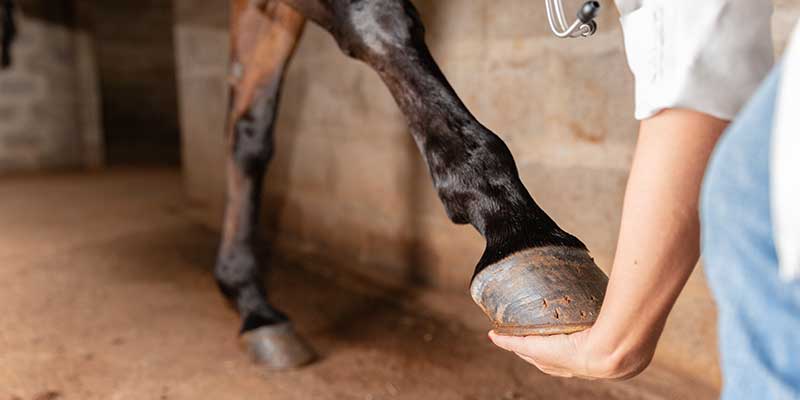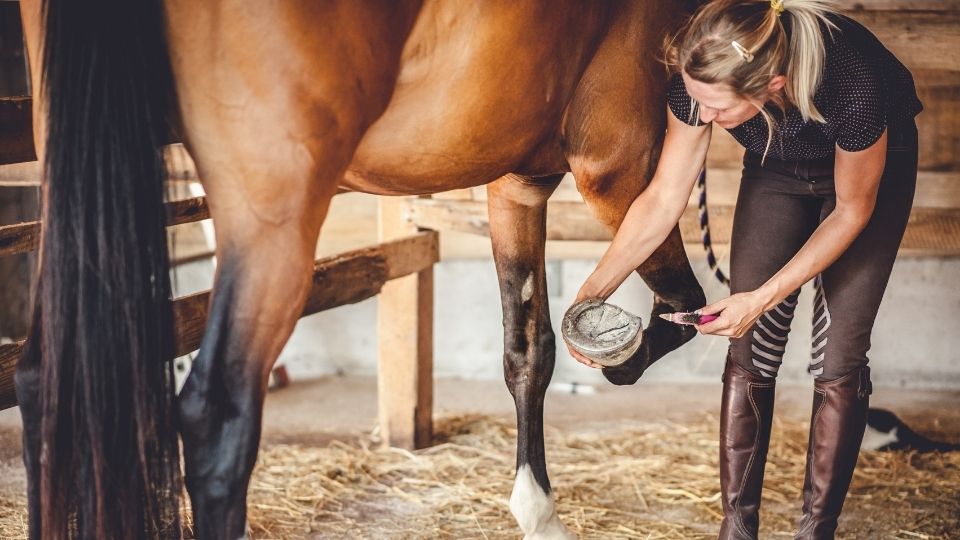
What Causes Abscess in Horse Hoof? Understanding the Factors
Share
For any health-conscious pet owner, understanding your horses hoof health is crucial. An abscess in a horse's hoof can be both painful and concerning for both the horse and the owner. But what causes abscess in horse hoof? This article dives deep into the factors that lead to this common issue, its symptoms, treatment options, and preventive measures.

The Importance of Hoof Health
The horse's hoof is a complex structure that plays a critical role in their overall health. Just like humans need healthy feet, horses depend on their hooves for mobility, balance, and overall well-being. Thus, issues like abscesses require immediate attention to prevent further complications.
What Exactly is a Hoof Abscess?
A hoof abscess is a localized infection that occurs when bacteria invade the hoof tissue. This can happen due to trauma, foreign bodies, or underlying diseases. When the infection occurs, pus builds up inside the hoof, leading to pain and discomfort for the horse. Symptoms often include lameness, sensitivity around the hoof, and a strong, foul odor emanating from the infected area.

Primary Causes of Abscess in Horse Hoofs
Several factors can contribute to the occurrence of abscesses in horse hooves. Understanding these causes can help pet owners take preventive measures.
1. Poor Hoof Care
One of the leading causes of abscesses is inadequate hoof care. Horses need regular trimming and balancing to maintain their hoof structure. Neglecting hoof care can lead to cracks and fissures, which provide a gateway for bacteria to enter.
2. Moisture and Unsanitary Conditions
Horses that are kept in damp or unsanitary environments may develop hoof abscesses. Wet conditions can soften the hoof wall, making it more prone to injury and eventual infection. Proper ventilation and keeping the stable clean can help mitigate this risk.
3. Foreign Objects
Sometimes, horses can step on sharp objects or thorns that puncture the hoof. These injuries may not be immediately noticeable but can lead to an infection over time. Regular hoof inspections can help catch such issues early on. For detailed steps on checking your horses hooves, visit how to clean a horse hoof.
4. Laminitis and Other Health Issues
Underlying health conditions such as laminitis can weaken the horse's hooves, making them more susceptible to abscesses. If your horse shows signs of laminitis, it is imperative to consult with a veterinarian.

Identifying Symptoms of Hoof Abscess
Recognizing the symptoms of an abscess is key for timely intervention. Some common signs include:
- Severe lameness
- Heat in the hoof
- Increased sensitivity when pressure is applied
- Loss of appetite
If you notice these signs in your horse, it may indicate an abscess. Immediate veterinary attention is essential for proper diagnosis and treatment.

Treatment Options for Hoof Abscess
Once an abscess is confirmed by a veterinarian, treatment can commence. Typically, treatment includes:
- Draining the abscess to relieve pressure
- Cleaning the hoof to remove any debris
- Applying a poultice to promote healing
For more detailed steps on specific treatments, check out how to treat an abscess. Remember, following veterinary advice and being vigilant about hoof care are essential for effective healing.
Preventive Measures to Avoid Abscesses
Prevention is always better than cure. Here are some preventive measures all health-conscious horse owners should consider:
- Regularly inspect and clean your horse's hooves
- Provide a clean and dry living environment
- Schedule routine farrier visits for proper trimming
- Monitor your horse's diet to maintain overall health
A proactive approach can significantly reduce the likelihood of hoof abscesses. For more on maintaining hoof health, refer to hoof trimming techniques.
When to Seek Veterinary Help
If you notice persistent symptoms despite providing care, it may be time to consult a veterinary professional. A veterinarian can conduct proper diagnostics to rule out more serious conditions such as laminitis or other infections. Quick treatment can often lead to a successful recovery.
Frequently Asked Questions
1. Can a hoof abscess heal on its own?
While small abscesses may resolve with minimal intervention, it is generally advised to seek veterinary care to prevent complications and ensure proper healing.
2. How long does it take for a hoof abscess to heal?
Healing time can vary but typically takes anywhere from a few days to a few weeks, depending on the severity of the abscess and the treatment provided.
3. What can I do to prevent abscesses in my horse?
Regular hoof care, a clean environment, and a balanced diet are among the best practices to prevent abscesses in horses.
As an Amazon Associate, I earn from qualifying purchases.
As an Amazon Associate, I earn from qualifying purchases.
